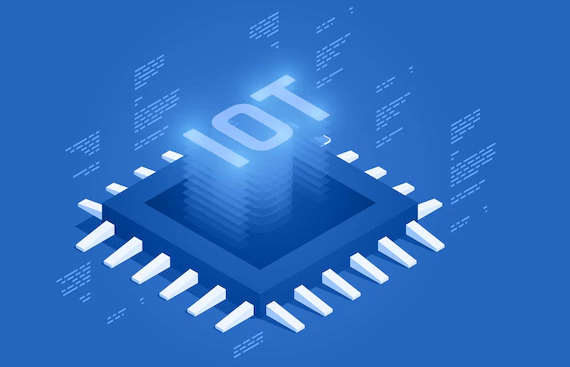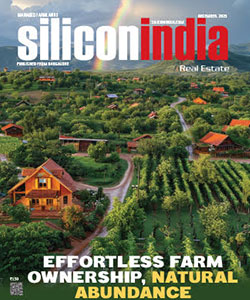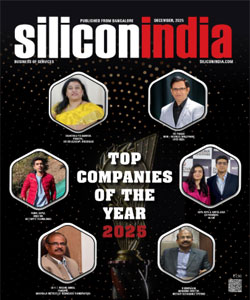How Small Medium Enterprises Revoluntiozing the IoT

The Internet of Things (IoT) may bring to mind driverless cars, smart grids, and warehouse robots. While IoT appears to be mainly a technology for large enterprises, it is, in fact, an attractive business reality for small and medium enterprises (SMEs) too. And though IoT holds tremendous potential for the industrial sector, it can be used in just about any sector. Here's why:
Interconnected smart devices enable automation, which reduces operating costs and, by eliminating human error, improves product quality and the ability to create more complex products. These advantages positively impact the bottom line - for companies of any size.
The global IoT market size is projected to grow from $478 billion in 2022 to $2,465 billion by 2029. Currently, enterprise IoT makes up about three-quarters of the IoT market, although IoT revenue across the board is expected to grow year-on-year. A strong uptake of IoT solutions is also evident in IoT spending, which is expected to reach $1.1 trillion in 2023.
How are SMEs using IoT?
SMEs have shown a healthy interest in adopting IoT. In a report by market insights and competitive intelligence provider IoT Analytics, 70% of SMEs surveyed said they planned to use IoT to improve current products. The following IoT applications are gaining considerable attention among SMEs:
Inventory management
Your inventory management and analysis may become complicated and time-consuming with business growth. By using IoT sensors to track physical inventory, you can eliminate the need to scan labels or barcodes manually. IoT-based asset tracking involves using sensors to monitor and manage an asset's position and movements, can help identify lost or stolen items quickly.
Monitoring the construction site's
Noise, motion, and vibration sensors can improve worker safety by detecting accidents and allowing quick responses to be initiated. IoT sensors can also help monitor weather events to more accurately plan construction schedules and safety hazards.
Facility maintenance
IoT is a solution to maintaining your office(s) more energy and cost-efficiently. Smart thermostats and sensors can communicate with your HVAC equipment, dynamically adjusting temperature as required. Your facility's air conditioners can only switch on if they detect that people are working.
Furthermore, IoT sensors can alert you to issues with your IT and other equipment, saving money on parts/entire asset replacements, minimizing staff hours spent on fixing equipment, and helping prevent or reduce downtime.
Fleet operations and vehicle maintenance
IoT sensors can track and monitor various types of vehicle data. They can monitor vehicles, vehicle speed, and arrival times, and perform predictive maintenance.
Inventory tracking in stores
IoT devices and RFID tags can track store inventory to automatically inform staff if products are running low or an item isn't placed properly on a shelf. The RFID tag on a product transmits data to the IoT device, which is stored and analyzed.
Optimizing agricultural yield
IoT is among the technologies being used for precision farming, which also utilizes GPS, robots, and drones. Sensors are at the heart of collecting soil and environment data to create optimal growing conditions that improve crop output. For example, soil moisture sensors help schedule irrigation and understand the root zone, which is directly related to crop growth and health. They can be deployed in multiple outdoor locations or greenhouses to monitor soil saturation conditions for better irrigation decisions continuously.
Innovative applications of IoT by SMEs
Across sectors, IoT sensors are being used innovatively. Here are some companies that have created IoT-based products.
Smart infant monitor to prevent sudden infant death syndrome (SIDS)
Mimo Smart Infant Monitor sends babies' sleep, body position, and breathing data in real-time to parents' smartphones or tablets. The sensors on the baby's onesie/kimono pick up movements, patterns, and skin temperature and communicate the information via Bluetooth to the Lilypad. From here, the information and live audio is sent via parents' home internet to their iPhone or Android devices.
Pill for medication and activity management
Proteus Pill is an ingestible pill sensor that transfers information such as the type of pill taken and the time at which the patient took the pill. This information is sent to a patch worn on the skin and logged for the patient and their doctor's reference. The pill can also detect heart rate, body position, and activity.
Smart sensor racquet
French company Babolat has developed Babolat Play, a tennis racquet that uses sensors to analyze players' games over time. The sensors record the type of shot (forehand or backhand), and its spin and slice, which is then sent to tablets or smartphones via Bluetooth for analysis.
Rafael Nadal and Kim Clijsters have trialed the racquet. The app and online service associated with the app are intended to help players and coaches perform data analysis and create graphic profiles. An optional feature lets players post their gameplay data on social networks and challenge friends in stats battles.
IoT Wireless air quality sensor
The air quality and UV sensors provide users with instant feedback on their environment. The device detects PM10 (particles 10 micrometers or smaller) and PM2.5 (particles 2.5 micrometers or smaller) in the environment. PM10 particulate matter includes allergens like pollen, while PM2.5 consists of fine particulate matter found in car exhaust and smoke.
The LED built into the sensor provides feedback on air quality with a color-coded system. Detailed data is available through a mobile app, which pairs with GPS to create a crowdsourced air quality map. The user data can help plan the best routes and areas for outdoor activity.
The device's UV sensor tracks sun exposure to ensure healthy light levels and avoid sunburn, hive, dehydration, and heat stroke.
What does an IoT system look like?
The typical IoT system has the following components.
- Hardware: Sensors that gather and share data from the immediate environment
- Cloud connectivity: Wi-Fi, satellite, cellular, and wide-area networks (WAN), among other types
- Data processing software: AWS, MS Azure, and SAP Analytics Cloud are popular tools to analyze data and convert it into a helpful format
- User interface: A mobile application that sends an email or text notifications when values go above or below your thresholds
Barriers to adopting IoT (and what SMEs can do)
The SMEs surveyed in the IoT as mentioned earlier, Analytics report cited a need for more internal talent and internal technology expertise as barriers to implementing IoT solutions. Outsourcing IoT innovation to suppliers and partners can close talent and technology gaps. This approach has been proven to help companies save costs, implement IoT with greater efficiency, and reduce the likelihood of failure.
Fewer respondents cited the cost of IoT implementation as an obstacle. The average price of IoT sensors has fallen over the last two decades, from $1.30 in 2004 to $0.38 in 2020. The price decline has been driven by an increasing number of suppliers, more efficient technology, and a lower connection, storage, and processing cost.
The bottom line
SMEs have a reason to refrain from using IoT. IoT implementation should happen without further ado if a use case is identified. You can expect to allocate your spending towards sensors, an IoT data processing tool, and mobile app development. Your in-house IT team can manage deployment, or you can consult an external provider. With business growth, your IoT architecture will also scale. Solid IoT architecture planning will prevent things from becoming too complex and continue generating deep insights and improving your operations.
Read More News :
JSW to invest Rs 1 lakh crore in Odisha
Govt slashes windfall tax on locally produced oil, diesel exports



